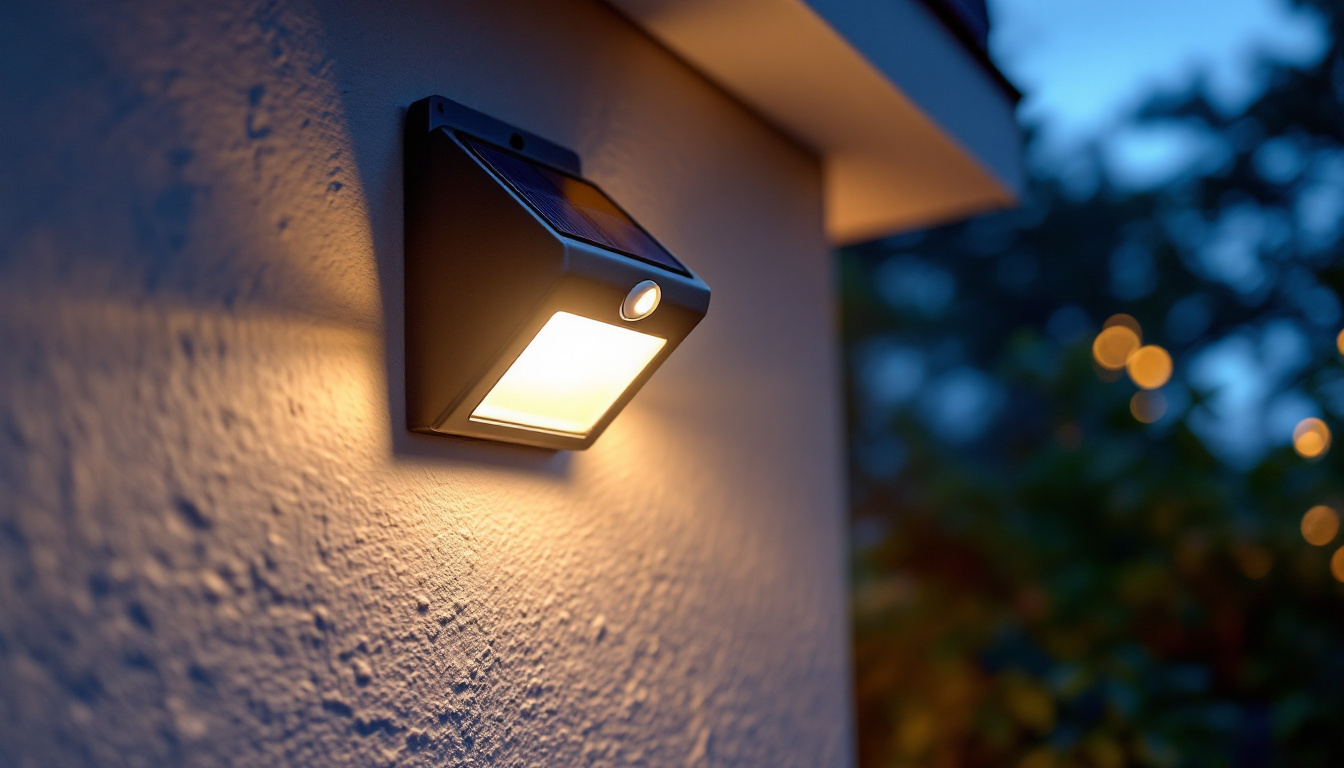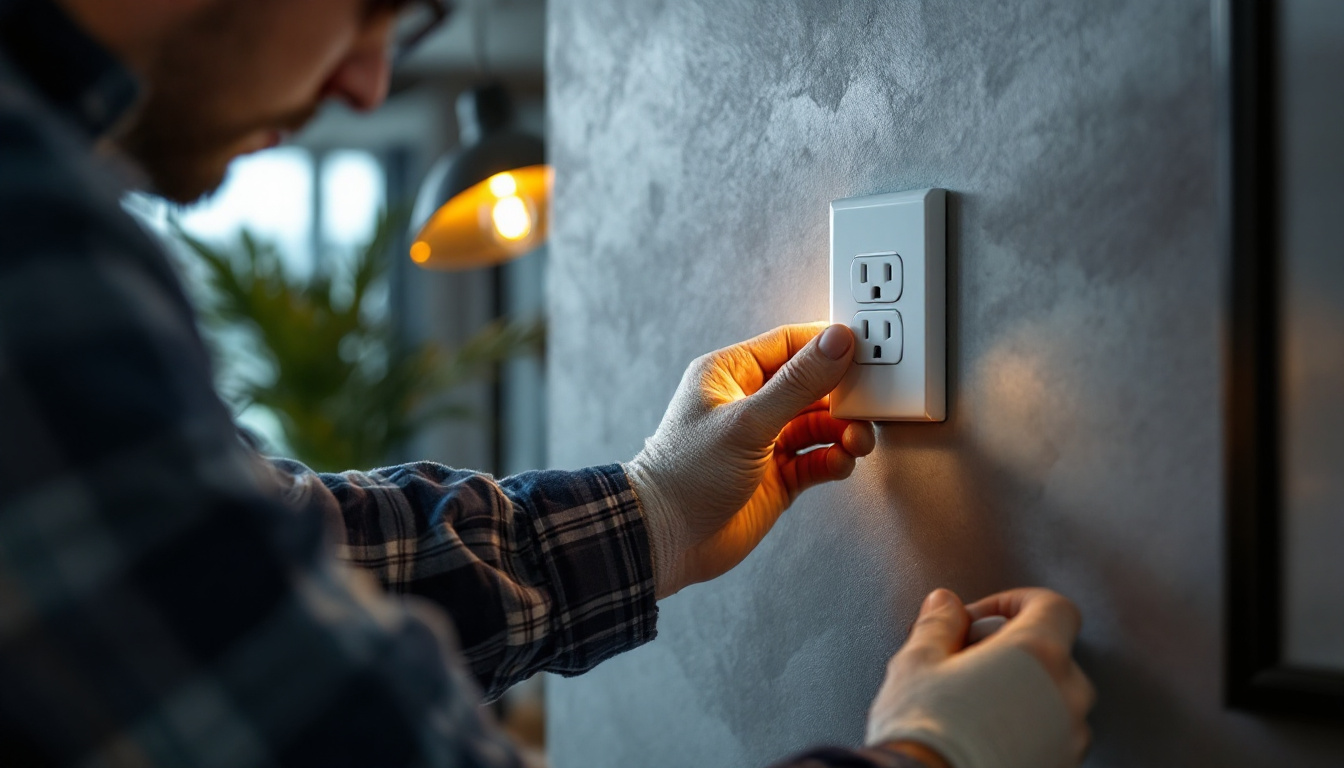

In recent years, solar powered motion detection lights have gained significant popularity among homeowners and businesses alike. These innovative lighting solutions not only enhance security but also promote energy efficiency and sustainability. As a lighting contractor, understanding the nuances of these systems can provide you with a competitive edge in the market. This article delves into the critical aspects of solar powered motion detection lights, from their components to installation and maintenance, ensuring you have all the information you need.
Solar powered motion detection lights are designed to illuminate areas when movement is detected, using solar energy as their primary power source. This technology combines solar panels, motion sensors, and LED lights to create an efficient and environmentally friendly lighting solution.
To fully appreciate how solar powered motion detection lights function, it’s essential to understand their key components:
Understanding these components is crucial for contractors as it allows for better installation and troubleshooting, ensuring optimal performance for clients. Additionally, the integration of smart technology in some models has introduced features like remote control operation and smartphone connectivity, allowing users to monitor and adjust settings from afar. This advancement not only enhances user convenience but also provides valuable data on usage patterns and energy consumption, further promoting energy efficiency.
The operation of solar powered motion detection lights is relatively straightforward. During the day, the solar panel absorbs sunlight, converting it into electrical energy. This energy is used to charge the battery, which powers the light at night. When the motion sensor detects movement, it sends a signal to the LED light, activating it for a predetermined duration.
Most systems allow for adjustable sensitivity and duration settings, enabling customization based on the specific needs of the installation site. This flexibility is a significant selling point for contractors, as it allows for tailored solutions for different environments. For instance, in areas with frequent wildlife movement, a higher sensitivity setting may be necessary to avoid false alarms, while in residential settings, a lower sensitivity might suffice to conserve battery life. Furthermore, the aesthetic design of these lights has evolved, with options available that blend seamlessly into various outdoor settings, from modern landscapes to rustic gardens, ensuring that functionality does not compromise visual appeal.
Solar powered motion detection lights offer numerous advantages that make them an attractive option for both residential and commercial applications. Understanding these benefits can help contractors effectively communicate their value to potential clients.
One of the most compelling benefits of solar powered motion detection lights is their energy efficiency. By harnessing solar energy, these lights reduce reliance on grid electricity, leading to lower energy bills. This aspect is particularly appealing to environmentally conscious clients who prioritize sustainability.
While the initial investment in solar powered motion detection lights may be higher than traditional lighting options, the long-term savings can be significant. With no ongoing electricity costs and minimal maintenance requirements, these systems can provide substantial cost savings over time.
Motion detection lights improve security by illuminating dark areas when movement is detected. This feature can deter potential intruders and provide peace of mind for homeowners and business owners. Additionally, the presence of these lights can enhance visibility for security cameras, further improving safety.
Installing solar powered motion detection lights requires careful planning and execution. As a lighting contractor, understanding the various factors that influence installation can lead to successful projects and satisfied clients.
Before installation, conducting a thorough site assessment is crucial. Factors such as the amount of sunlight the area receives, the presence of obstructions, and the desired coverage area all play a role in determining the optimal placement of solar lights. Ensuring that the solar panel receives adequate sunlight throughout the day is essential for maximizing performance.
Solar powered motion detection lights can be mounted in various ways, including wall mounting, pole mounting, or even integrated into existing structures. Contractors should consider the specific requirements of each installation site to determine the most effective mounting option. Additionally, ensuring that the lights are positioned at the correct height and angle can significantly impact their effectiveness.
While solar powered lights typically do not require extensive wiring, ensuring secure connections between the solar panel, battery, and light fixture is vital. Contractors should follow manufacturer guidelines to ensure proper installation and functionality. Furthermore, protecting connections from moisture and debris can prolong the lifespan of the system.
Although solar powered motion detection lights require minimal maintenance, regular checks can ensure optimal performance and longevity. As a contractor, educating clients on maintenance practices can enhance their satisfaction and trust in your expertise.
Dust, dirt, and debris can accumulate on solar panels, reducing their efficiency. Regularly cleaning the solar panel with a soft cloth or sponge can help maintain its performance. Contractors should recommend a cleaning schedule based on the local environment, as areas with heavy pollen or dust may require more frequent cleaning.
Over time, the battery in solar powered motion detection lights may lose capacity. Educating clients about the signs of a failing battery, such as reduced illumination duration, can prompt timely replacements. Additionally, contractors should advise clients on the importance of using high-quality batteries that are compatible with their lighting systems.
Regularly testing the motion sensors is essential to ensure they function correctly. Clients should be encouraged to walk through the detection area periodically to confirm that the lights activate as expected. If issues arise, troubleshooting steps can be taken to address sensor malfunctions or misconfigurations.
With a variety of solar powered motion detection lights available on the market, selecting the right product for a specific application can be challenging. As a contractor, understanding the key features and specifications can help guide clients in making informed decisions.
Different applications may require varying levels of brightness. When selecting solar powered motion detection lights, consider the lumen output, which indicates the brightness of the light. For security purposes, brighter lights are often preferable, while softer illumination may be suitable for decorative or pathway lighting.
The detection range and angle of the motion sensor are critical factors in ensuring adequate coverage. Contractors should assess the specific needs of the installation site and recommend lights with appropriate detection capabilities. A wider detection angle can cover larger areas, while longer ranges can be beneficial for expansive properties.
Since solar powered motion detection lights are often installed outdoors, durability and weather resistance are paramount. Contractors should look for products constructed from high-quality materials that can withstand various environmental conditions, including rain, snow, and extreme temperatures. Additionally, lights with an IP rating can provide assurance of their water and dust resistance.
While solar powered motion detection lights offer numerous benefits, they are not without challenges. Understanding these common issues and their solutions can empower contractors to provide exceptional service to clients.
One of the primary challenges with solar powered lights is insufficient sunlight, which can hinder performance. In areas with limited sunlight, contractors may recommend installing the lights in more favorable locations or suggesting supplemental lighting options. Additionally, educating clients on the importance of keeping solar panels clear of obstructions can enhance performance.
Battery failure is another common issue that can affect the performance of solar powered motion detection lights. Contractors should advise clients on the signs of battery deterioration and recommend high-quality replacements. Offering a warranty or maintenance plan can also provide clients with peace of mind regarding battery performance.
Motion sensors can sometimes malfunction due to environmental factors or misconfigurations. Regular testing and maintenance can help identify and resolve these issues. Contractors should be prepared to troubleshoot sensor problems, ensuring that clients receive prompt and effective solutions.
Solar powered motion detection lights represent a significant advancement in outdoor lighting technology, offering energy efficiency, cost savings, and enhanced security. For lighting contractors, understanding the components, benefits, installation considerations, and maintenance practices associated with these systems is essential for delivering high-quality service to clients.
By staying informed about the latest developments in solar powered lighting technology and addressing common challenges, contractors can position themselves as experts in the field. This knowledge not only enhances client satisfaction but also contributes to a more sustainable future through the promotion of renewable energy solutions.
Investing in solar powered motion detection lights is not just a smart choice for clients; it is also a step towards a greener and more secure environment. As the demand for energy-efficient lighting continues to grow, contractors who embrace this technology will undoubtedly thrive in the evolving landscape of outdoor lighting.
Ready to elevate your lighting solutions with the efficiency and security of solar powered motion detection lights? At LumenWholesale, we provide contractors with the highest quality, spec-grade lighting products at unbeatable wholesale prices. Say goodbye to local distributor markups and hello to our extensive selection that meets rigorous industry standards. Plus, with free shipping on bulk orders, you can ensure your projects shine brighter without any hidden costs. Take advantage of the perfect combination of quality, affordability, and convenience. Wholesale Lighting at the Best Value is just a click away. Partner with LumenWholesale today and light up your projects with confidence.

Discover essential insights into outdoor house lighting that every contractor should know.

Discover the essential checklist for lighting contractors with our comprehensive guide on 4 ft LED light fixtures.

Explore essential insights for lighting contractors in our comprehensive guide on wall receptacles.

Discover how outdoor hanging lanterns are revolutionizing the lighting industry with their blend of aesthetic appeal and functionality.
Get notified when NEW deals are released.
Optimize your budget with wholesale discounts.
Only top-quality, specification-grade lighting products.
No additional costs at checkout - what you see is what you pay.
We understand the unique needs of contractors.